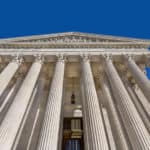Must Read
James Woods Smacks Down Speaker Johnson
No one says it quite like James Woods. He verbally smacked Speaker Johnson and linked to the video of Johnson blaming white men and...
What the Media Won’t Tell You: SCOTUS Ruling Threatens DEI
On Wednesday, the Supreme Court ruled 9-0 that employees can sue for any discrimination, and they lowered the standard to sue.
Will it mean the...
National Guard Captain Testifies: Forced to Stand Down Until 5 pm on J6
National Guard whistleblower Captain Timothy Nick said the Guard was ready to go to the Capitol on January 6 to help the police but...
New York City Stores Are Giving Up as Criminals Take Over the City
In New York City, officials side with the criminals. Because they can shoplift hundreds of dollars worth of items every day, shoplifting syndicates have...
Proof Democrats Think You’re Stupid
This is an unbelievably insulting Democrat political ad. Stereotyping Southerners is a favorite tactic of the left. They demonize everyone who disagrees with them.
Democrats...











